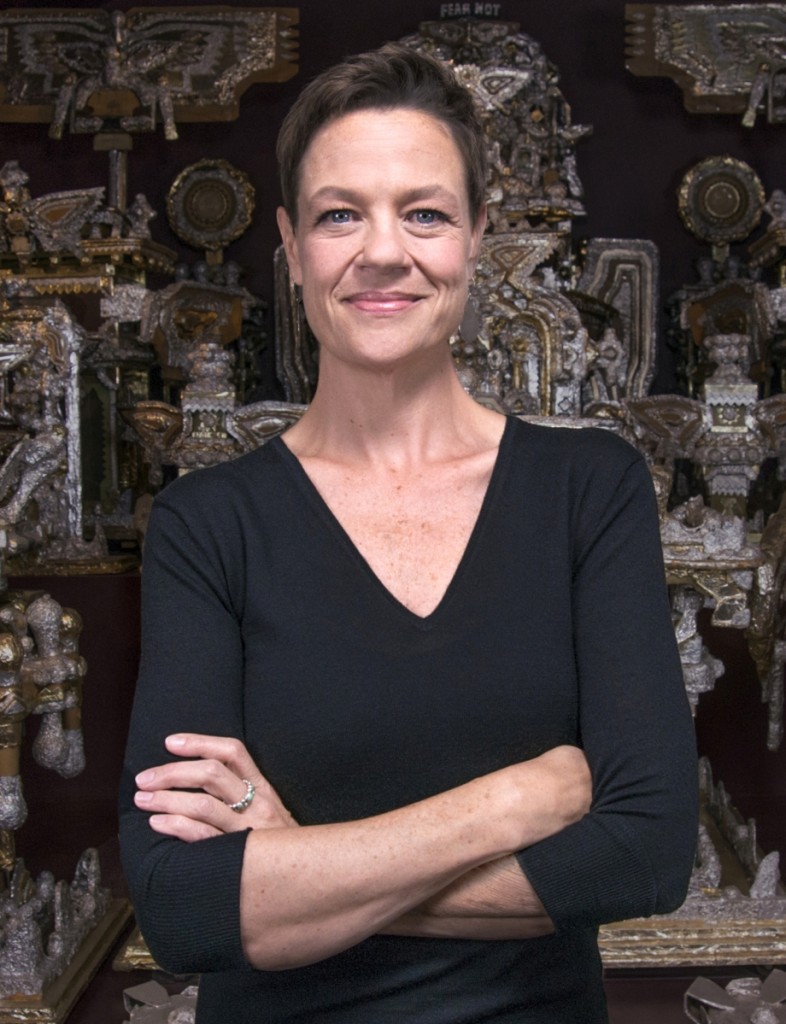.jpg)
Untitled (Radio) by Bill Traylor, circa 1940–42, Opaque watercolor and pencil on printed advertising paperboard, 32½ by 24½ inches. Smithsonian American Art Museum, museum purchase through the Luisita L. and Franz H. Denghausen Endowment, accession # 2016.14.4.
Images courtesy Smithsonian American Art Museum
Sotheby’s withdrew from its January 21 sale of Americana four works attributed to the self-taught artist Bill Traylor (c.1853-1949) after questions were raised about their authenticity. With great examples of Traylor’s work commanding blue-chip prices, and lesser works turning up with increasing frequency, the stakes are high for collectors, dealers and auction houses. Circumspection and care are needed when considering Traylor’s works.
In view of the risks, Antiques and The Arts Weekly reached out to Leslie Umberger, curator of folk and self-taught art at the Smithsonian American Art Museum, for her thoughts on what experts look for when evaluating works by Traylor. Umberger, who is curating the upcoming exhibition “Between Worlds: The Art of Bill Traylor,” emphasizes the importance of exercising due diligence on drawings and paintings by this prominent artist.
At First Glance
Umberger’s first step when considering a Traylor is determining whether she is already familiar with the work. Her exhibition and catalog research has led her to document more than 1,000 of Traylor’s known works, not including pieces that were scantily documented or have question-raising issues. She asserts that the majority of Traylor’s works have been on record (to at least some degree) since they were first made and collected in the late 1930s and reside in a known collection.
The history of a work is key to Umberger. “Provenance and chain of command are extremely important. The Montgomery [Ala.] artist Charles Shannon was the primary collector and patron of Traylor’s work, but there were other known individuals who also purchased work from Traylor between 1939 and 1942 and those works can be traced to their origin; some works made later seem not to have survived. Stories arise now and then about members of the art world acquiring Traylor works sometime between 1941 – when Shannon had some New York interactions – and the time that Traylor’s art started being marketed in New York in 1979 – but there is no evidence to support these claims.
“Any find from attics or a stash of mislaid papers should raise a red flag. The fantasy of discovery is a perennial favorite, but these stories rarely align with the historical facts. For the most part, authentic Traylor works are known and have been seen over time. There are lesser known or less frequently transacted pieces that turn up, but they don’t materialize from entirely new or mysterious sources.”
Untrained artists such as Traylor rarely had access to archival materials, so most often used materials outside the conventional canon. As a result, Umberger cautioned against the temptation to authenticate based solely on materials. “Traylor had a limited array of materials, but that does not exclude a few unique works or a colored pencil or pigment that was uncommon. There is a core body of standards but some oddities that happened into the mix as well. You can’t authenticate on materials alone; the artwork embodies a matrix of factors.”
When In Doubt
At present, there is no governing body for authenticating Traylor’s works. Umberger suggested getting a compendium of opinions when there is even a shadow of doubt about a work. “In the end I would always recommend involving an expert – and preferably more than one. Experts vary, but things to look for are professional credentials, published, peer-reviewed scholarship and an established history with the body of work of a particular artist. Curators and historians will know the nuanced variables of an artist’s hand and materials, the details of provenance and collection locations, among other things. Conservators know the production dates and composition of various materials and understand condition similarities or irregularities. If a conservator knows the body of work well, that person can an also speak to overarching consistency throughout a body of work. Scientists can perform specific tests on any inks, paints or papers requiring further examination. Dealers, collectors and registrars may have sales records, inventories, exhibition files and photographs that trace a work over time.”
Learn More
Umberger’s forthcoming exhibition catalog will be published this fall, to coincide with the opening of the exhibition in late September. Between Worlds researched Traylor’s history from the ground up in order to offer the most comprehensive history of his life and examination of Traylor’s art to date. It will be an invaluable addition to existing Traylor scholarship, which includes Margaret Lynne Ausfeld and Susan Crawley’s Bill Traylor: Drawings from the Collections of the High Museum of Art and the Montgomery Museum of Fine Arts (2012) and Mechal Sobel’s Painting a Hidden Life (2009).
Great collections of Traylor’s works can be viewed at the High Museum of Art, the Montgomery Museum of Fine Arts, the Metropolitan Museum of Art and the Smithsonian American Art Museum.
-Madelia Hickman Ring





